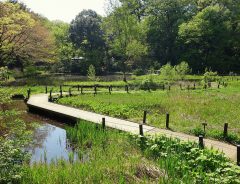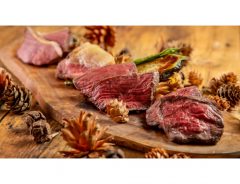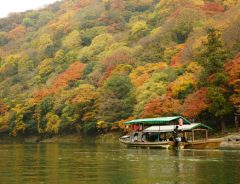
Source: SandraFotodesign / PIXTA(ピクスタ)
Japan Has a Deer Overpopulation Problem and Japan Wolf Association Think They Have a Solution
- Source:
- Japan Wold Association English / psmag / Nippon / Japan Wolf Association
Related Article
-

WWF climate change photography exhibition at Daimaru Matsuzakaya Ueno
-

Japan to open ONEBIENT, a new retreat that blends automated technology and nature into sustainable villa
-

See Tokyo (almost) as nature intended at the National Institute for Nature Study
-

A feast for carnivores: Bread and Circus puts deer, bear, badger and boar on the menu
-

Japanese Illustrator’s Amazing Anthro-Animal Series Gives Them Fantastical Styles From Around The World
-

Walk Through The Stunning Autumn Leaves Of Kyoto’s Famous Arashiyama Sightseeing Course


Japan’s native sika deer have become a massive tourist draw in Nara and Miyajima where they are revered as messengers for deities, free to roam around the town. These regions are willing to put up with the trouble a massive, roaming deer population causes in return for the increase in tourism, but these aren’t the only places that are overrun.
Source: Fast&Slow / PIXTA(ピクスタ)
The deer populations of Japan’s forests and national parks have been exploding causing damage to Japan’s ecosystem, agriculture and forestry.
Now in many regions, the scenic forestry is being ravaged by deers, their grazing affecting plant growth and diversity. They strip bark off trees and eat shrubbery and fallen leaves, leading to soil erosion. They eat so much, there’s none left for other species leading to reduced wildlife. Foraging herds cause agricultural damage, feasting on crops. In case that isn't enough, a rise in traffic accidents caused by deer has also been recorded.
There are a few reasons for the unfettered increase of deer numbers in Japan’s countryside areas. But many studies agree that the lack of a natural predator and a decrease in hunting traditions have played a major role.
Source: nobutti / PIXTA(ピクスタ)
The need to reduce the numbers is clear, and Japan’s government have turned to culling, hoping to cut the deer population in half by 2025. Massive culling operations can be a divisive method, but what other options are there?
The Japan Wolf Association are an organisation that argue strongly in favour of reintroducing a natural predator, namely wolves, into Japan’s ecosystem. The native Japanese wolf was once common to Japan’s main island Honshu, as well as Shikoku and Kyushu, but it went extinct over one hundred years ago.
According to the Japan Wolf Association, reintroduction of this predator will solve the deer population problem via the food chain, limiting the damage done to the natural environment by those pesky sika.
Source: asante / PIXTA(ピクスタ)
But of course, not everyone agrees with such a drastic measure, the popular image of wolves as a danger to people and farm animals leaves many with reservations. In response to the JWA’s mission, in 2012, Ministry of Environment official, Hitoshi Nakamura of the Southern Alps National Park region said that, “The reintroduction of the wolves can threaten the lives of people and livestock and disrupt the current ecosystem balance.”
But the Japan Wolf Association argue that this image is unfounded in reality and reflects a historical anti-wolf bias which has pervaded since the 19th century when wolves were hunted into extinction.
It’s certainly a creative way to deal with the issue, although controversial. Whatever you think of it, the JWA will continue to try to change the popular perception of wolves and one day, we may hear howling in Japan’s forests once more.